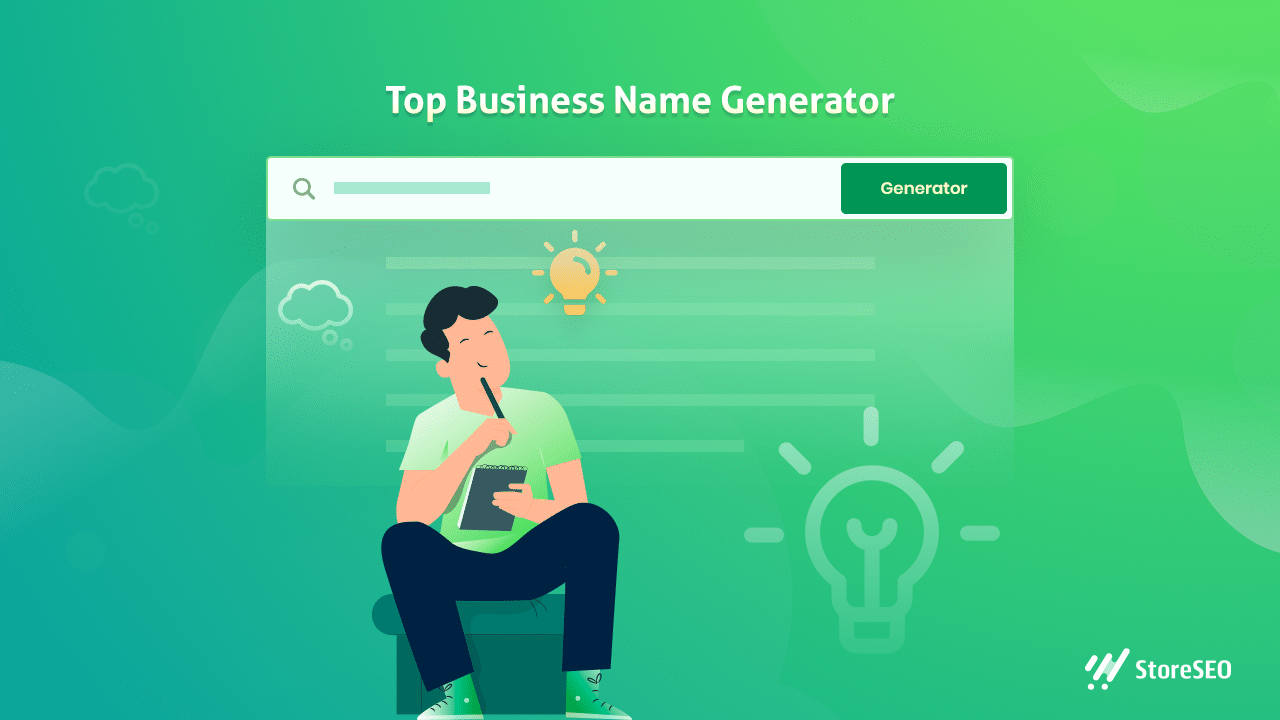When it comes to finding out about new product offerings, research has shown that the stores that rank at the top of the search results pages are the ones that are most likely to get clicks. But climbing to that coveted position can be challenging. That’s why today we will show you how to make your store rank on the first page on Google effortlessly with the right strategies.
Continue reading “How To Rank Your Shopify Store On First Page On Google Using StoreSEO”Tanaz Masaba
5 Link Building Tactics For eCommerce [That Work Great In 2025]
The impacts of applying SEO for your website can take quite a long time to come into effect. And one of the fundamentals of any SEO strategy involves link building. Today, we are going to walk you through the 5 essential link building tactics for eCommerce that will drive traffic to your business.
Continue reading “5 Link Building Tactics For eCommerce [That Work Great In 2025]”How To Migrate Your Online Store To Shopify?
With Shopify being one of the most popular eCommerce platforms, it’s not surprising that people often migrate to Shopify to take advantage of all advanced features. If you are planning to switch from your current eCommerce platform, then dive into this tutorial where you can learn how to migrate your online store to Shopify.
Continue reading “How To Migrate Your Online Store To Shopify?”Google Keyword Planner: How To Choose The Right Keywords For Your Business To Rank Higher
One of the basic fundamentals of optimizing your eCommerce store for SEO involves knowing how to do keyword research the right way. Thankfully, with powerful tools like Google Keyword Planner, finding the right keywords for your business is now easier than ever.
Continue reading “Google Keyword Planner: How To Choose The Right Keywords For Your Business To Rank Higher”Wix Vs Shopify: Which One Is The Best For Creating Online Store?
When it comes to choosing an eCommerce platform for your business, there are several factors to consider. And one of the most commonly asked questions is choosing between Wix vs Shopify.
While there’s no denying that both Wix and Shopify have amazing features for creating online stores easily, at the end of the day, different eCommerce business owners will have different needs.
Continue reading “Wix Vs Shopify: Which One Is The Best For Creating Online Store?”How To Do Keyword Research For Shopify Using StoreSEO? [2025]
One of the very first things you need to know about Shopify SEO is learning to use the right keywords to rank your products. After all, every potential customer enters specific search terms to look for their desired products or services—and you would want your store to appear at the top of results pages when they do.
So how do you know which keywords to use? In this guide, we are going to show you how to perform keyword research for Shopify and target the right search terms to help you drive traffic to your online business effortlessly.
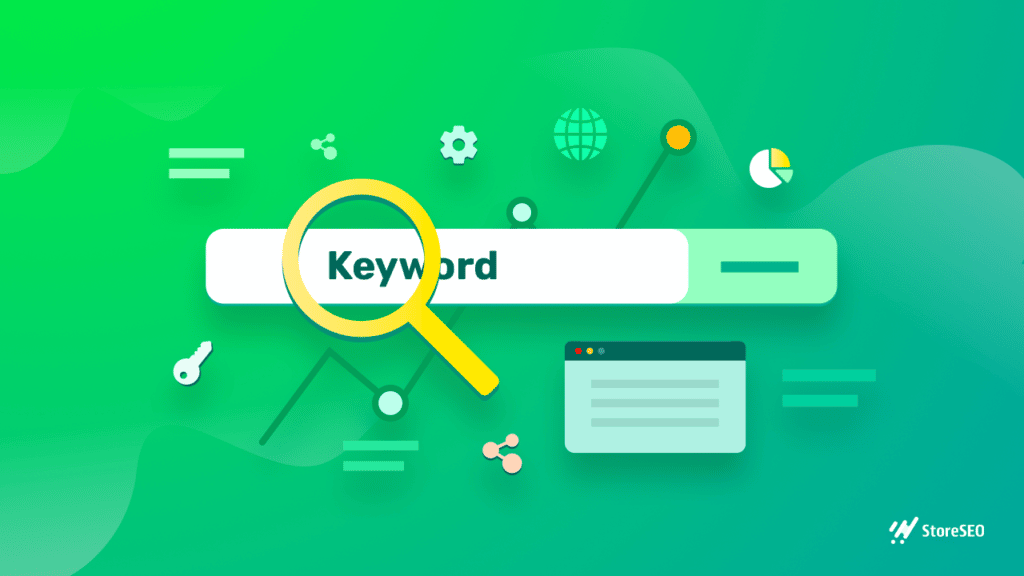
Why Is Keyword Research For eCommerce Important?
One of the basic fundamentals of eCommerce SEO is knowing how to do keyword research. This is because the main underlying principle of SEO is that you are helping search engines find the right content or links to display when any user searches for a product using specific search terms.
In other words, if you are in the business of selling handmade soy wax melts. However, your potential customers might be entering search terms like ‘cruelty free wax’ or ‘organic wax melts’. Your goal is to make sure your products and your store appear at the top of the search results pages for the keywords your customers are most likely to use.
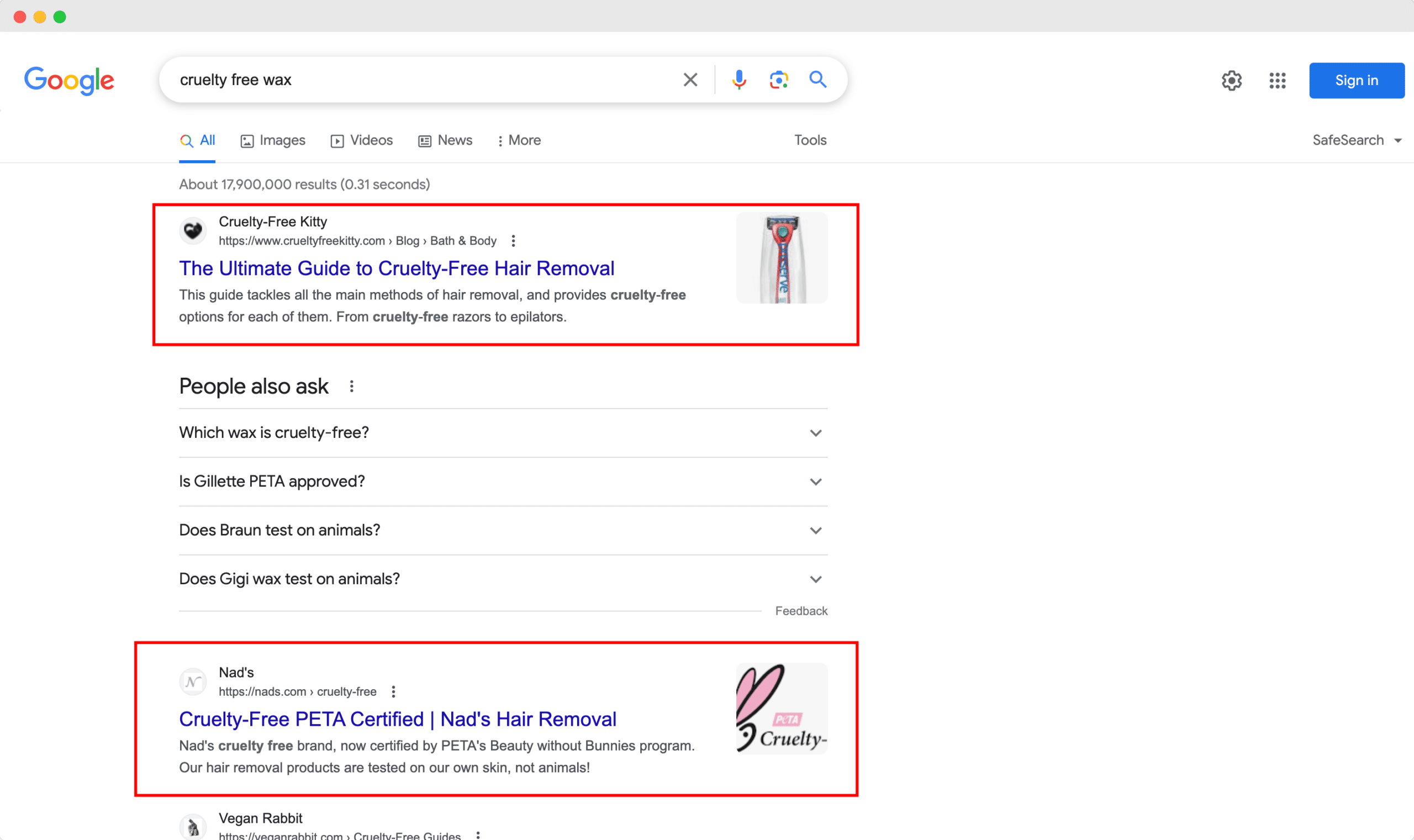
So how do you do that? The answer lies in knowing how to do keyword research.
Basics Of Keyword Research For eCommerce Stores
Now, if you want to do keyword research for Shopify businesses, you should first be familiar with some of the basic metrics that can help you understand which keywords you should be choosing. Below are some of the most common keyword research metrics you need to know about.
Search Volume: the first metric you should know about is the search volume of a keyword. As the name suggests, this tells you how many times a particular keyword has been searched for at any given period. In general, keywords with high search volume indicate that the search term is commonly used by potential customers.
But be careful! Don’t just select keywords only based on the search volume alone. While high search volume is preferable, you also have to ask yourself if the keyword is relevant with your own offering.
Moreover, you also need to consider other factors such as the amount of competition you may have to face to rank for that keyword. We’ll get on that in a bit.
Competition: like we said before, you need to know how much competition you will have to face to make your product rank at the top for any specific keyword. You have to be strategic when doing keyword research for Shopify, because picking a keyword that’s too competitive will only reduce your chances of gaining visibility on the search results pages.
Paid Difficulty: this is somewhat similar to the metric we mentioned above, except in this case, you will be measuring how difficult it would be for your store to rank for a paid ad using a specific keyword.
Cost Per Click: this tells you how much it would cost to rank for a certain keyword using paid ads. The amount shown is the amount you would have to pay if any customer clicks on your ads on search results pages.
Guide: How To Perform Keyword Research For Shopify Stores?
While Shopify has its own built-in features for SEO, if you want to easily perform keyword research for your Shopify products and optimize them, then you can check out StoreSEO. This is an advanced, all-in-one SEO solution for Shopify that comes with tons of features to help you rank your eCommerce store on page one of search results pages.
![How To Do Keyword Research For Shopify Using StoreSEO? [2025]](https://storeseo.com/wp-content/uploads/2022/07/image-11.png)
One of StoreSEO’s many key features is the advanced ‘Keyword Analytics’ feature, which lets you quickly look up the right search terms that you can use to target your customers. Below, we have shared a step-by-step walkthrough that you can use to perform keyword research for eCommerce businesses using StoreSEO.
Step 1: Install StoreSEO App On Your Shopify Store
First, make sure you already have your Shopify store set up with your products, pages, and other necessary details. Once that’s done, head over to Shopify App Store and install StoreSEO app.

After installing the app, you will be prompted to add some information about your eCommerce business and set up StoreSEO. To learn more, check out our complete guide on getting started with StoreSEO here.
Step 2: Configure Keyword Analytics With StoreSEO
Next, head over to your StoreSEO dashboard and select the product you want to optimize for SEO. Click on the ‘Fix’ button as shown below and you will be redirected to a new page where you can search for the right keywords to optimize your product.
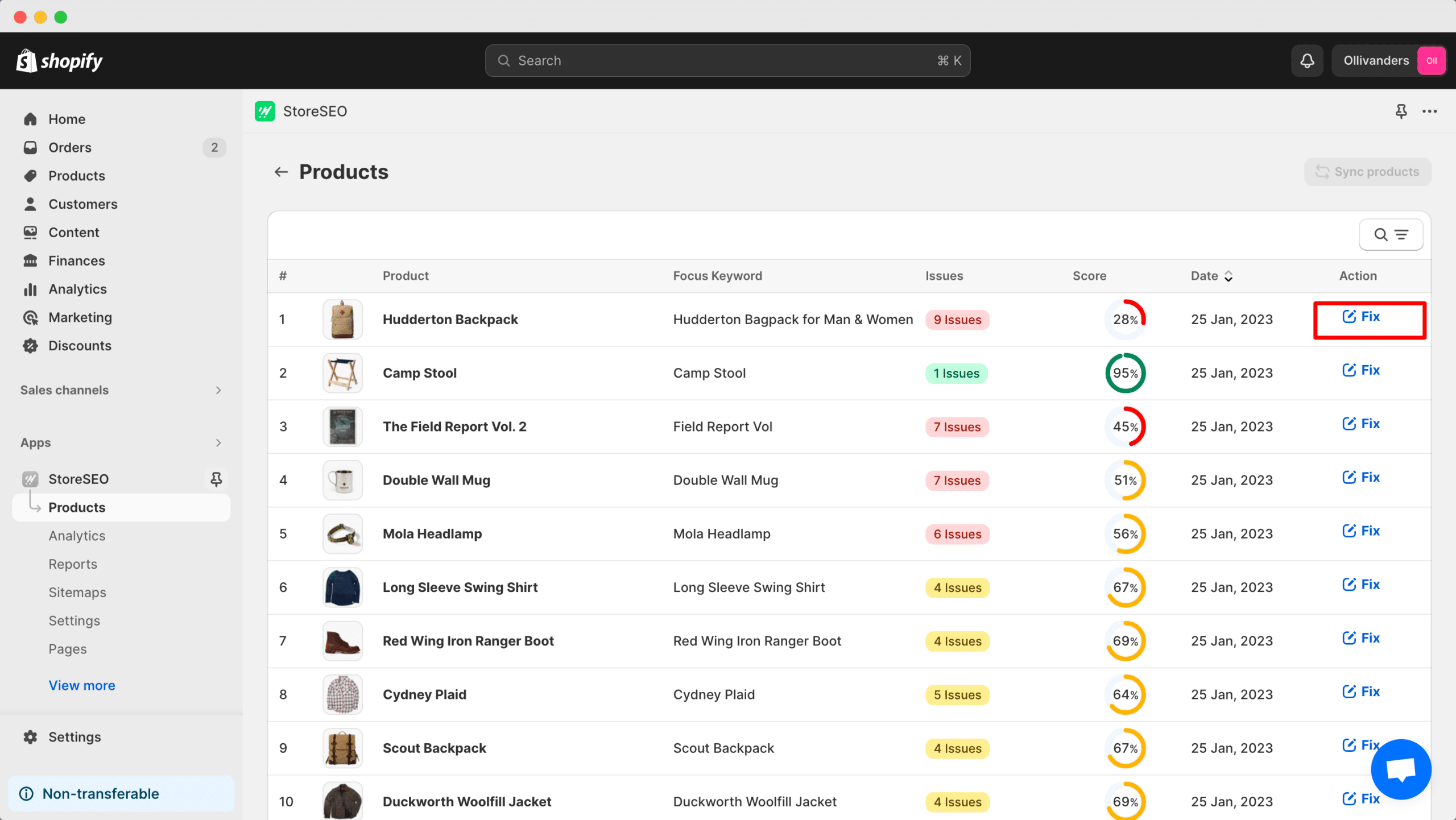
Now this is where the fun part begins. Here, you can see that StoreSEO offers detailed SEO fix instructions that you can follow to optimize your products with the best SEO practices. And you’ll notice, many of these instructions involve using the keywords, such as adding keywords in your product description, meta description, product page title, etc.
But which keyword should you use?
That’s where StoreSEO’s ‘Keyword Analytics’ feature comes in. Simply enter a keyword that is related to your product, and then click on the ‘Keyword Analytics’ button to see if this keyword will be useful for your business and your target customers.
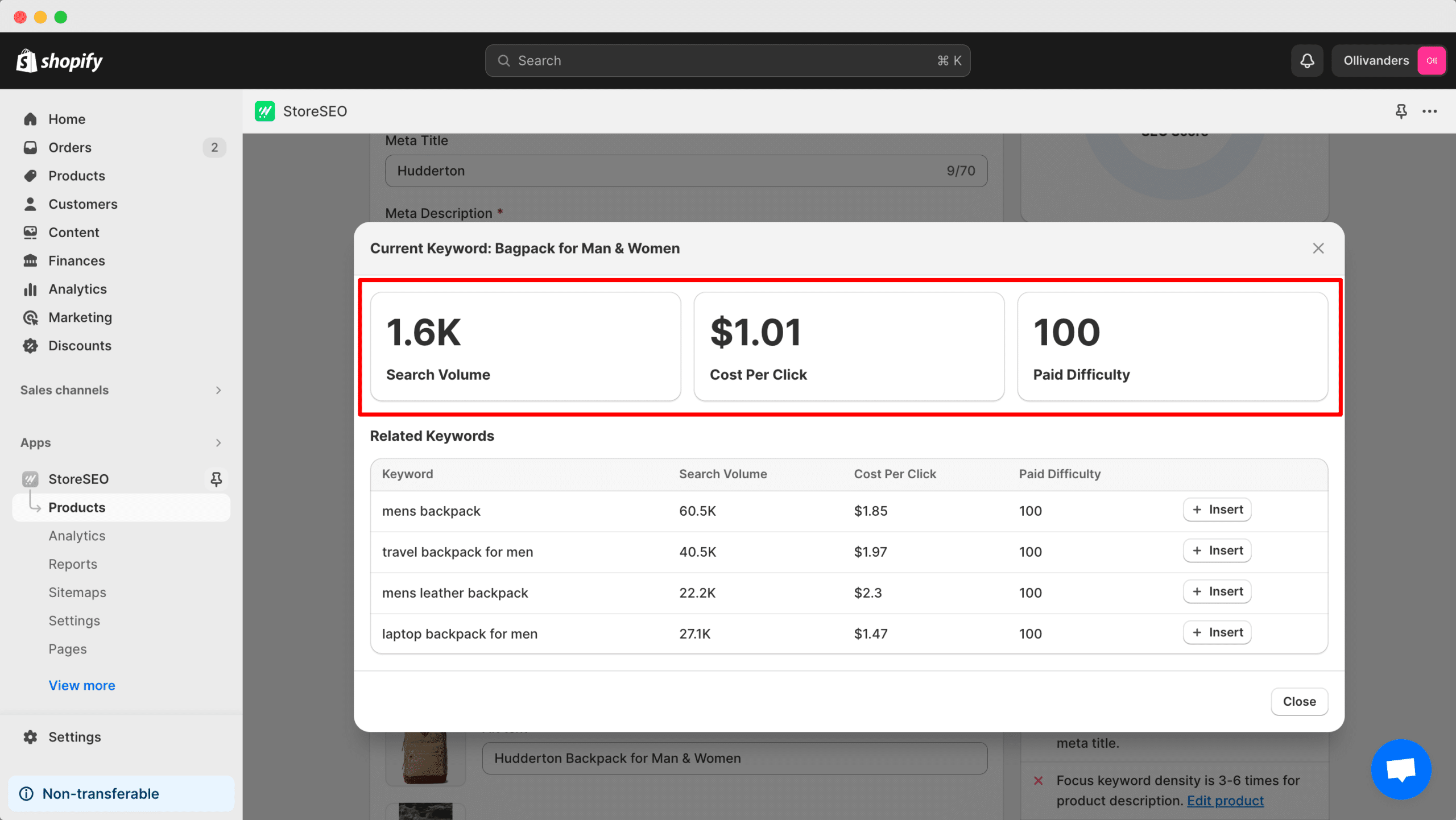
You’ll notice that for the keyword that you have entered, StoreSEO displays some of the most important metrics that can help you determine whether you should use that keyword for your product. While entering the focus keyword, try to use long tail keywords to easily rank on SERP.
These include the search volume, which tells you how many times that keyword has been searched by users; the cost per click (CPC), which tells you the cost you will have to pay if a customer clicks on your ad for that keyword; and the paid difficulty, which gives you an idea of how difficult it would be for your products to rank on search results pages for paid ads.
In addition to these, StoreSEO also displays several related keywords for you to use to optimize your products. Although you can only use one focus keyword to optimize your store, we recommend using the related keywords as tags to increase the chances of your customers finding your products for those search terms too.
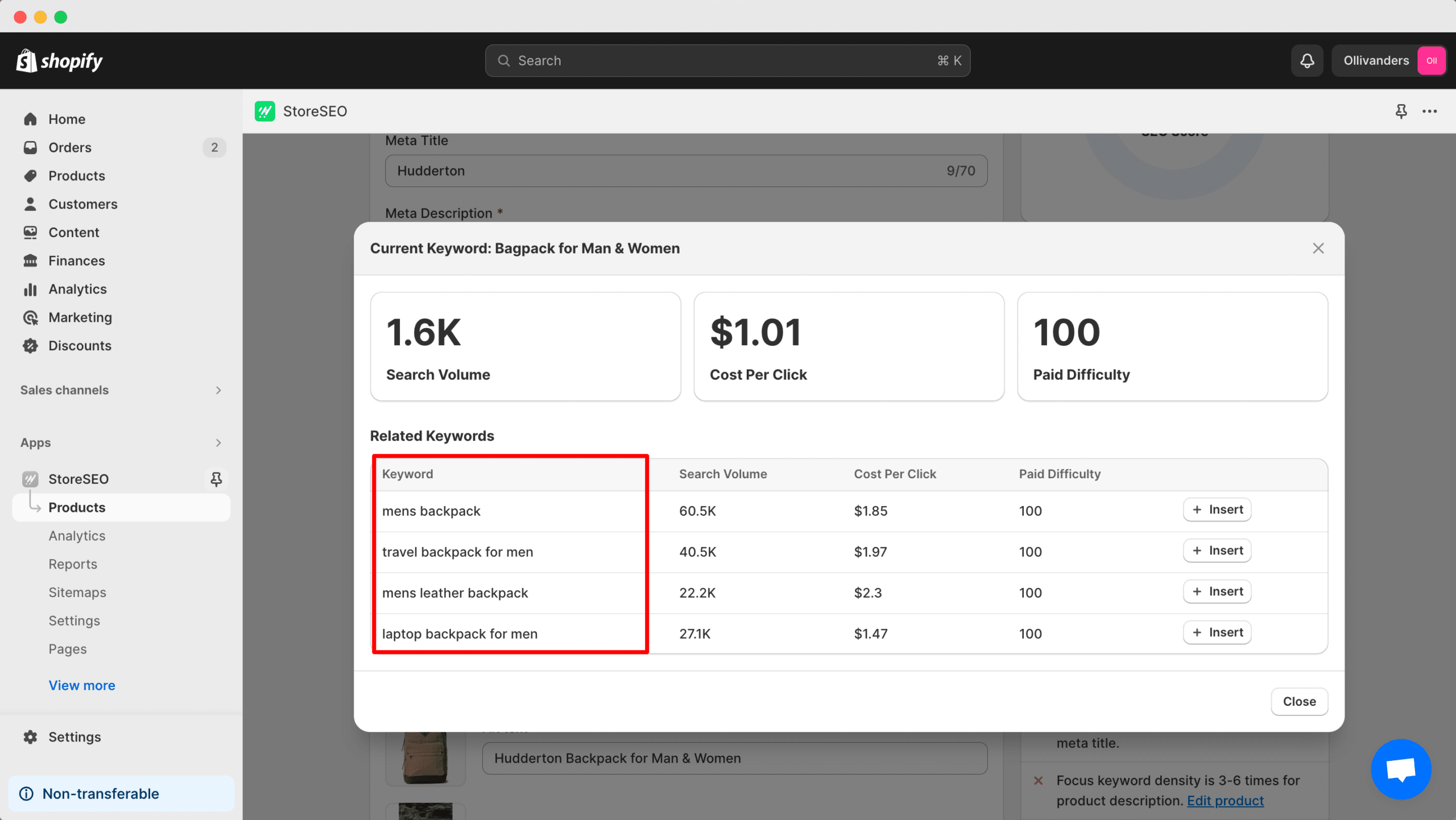
Step 3: Optimize Your Product Or Pages For SEO
Once you have decided which keywords you should use with the help of StoreSEO’s Keywords Analytics feature, it’s time for you to optimize your Shopify store with the right SEO practices.
As mentioned earlier, StoreSEO will provide you with detailed SEO instructions, and every time you update your products, pages, or content following these steps, your SEO score will improve.
Thus, in these ways, StoreSEO makes it super easy for you to do keyword research for Shopify with a few simple steps. Try it for yourself, and see how effortlessly you can drive traffic to your online business with the help of StoreSEO.
Bonus: Ultimate SEO Checklist To Rank Your Shopify Store On Page One
While using Shopify SEO solutions like StoreSEO will definitely give you an edge when it comes to ranking on page one of search results pages, it’s also important that you are familiar with all the steps involved in optimizing your Shopify business for SEO. To help you out, we have this detailed, ultimate SEO checklist that can help you rank your business to the top and boost your conversions effortlessly.
Enjoyed this post? Make sure to subscribe to our blog for more fun tutorials or join our friendly Facebook Community.
Shopify Blog: Best Practices & Guide to Get More Readers
When it comes to effective digital marketing strategies for your eCommerce business, creating content that is relevant to your target audience is essential. And that’s where blogging comes in. Today, we are going to share with you some of the best practices for running a Shopify blog so you can get more readers and turn them into returning site visitors.
Continue reading “Shopify Blog: Best Practices & Guide to Get More Readers”Ultimate SEO Checklist: How To Rank Your Online Store In 2025
Dreaming of seeing your online store rank on the first page of Google search results? While search engine optimization can seem confusing, with the right SEO checklist, you can easily drive traffic to your Shopify business over time. In today’s tutorial, we are going to cover some of the best SEO practices to take your eCommerce business off the ground.
Continue reading “Ultimate SEO Checklist: How To Rank Your Online Store In 2025”How To Build A Shopify Store From Scratch [In 30 Minutes]
Starting your eCommerce business can be exciting, but only if you know the right way to get started. Without a proper guide, you might accidentally set up your business for failure instead of success. That’s why we have prepared you an ultimate, comprehensive guide to help you build a Shopify store from scratch.
Continue reading “How To Build A Shopify Store From Scratch [In 30 Minutes] “Business Name Generator: How To Find Name For Your eCommerce Business
Starting a new eCommerce business can be both exciting and overwhelming–there are a million tasks you would need to take care of before your business can take off. Finding the right business name is one of them. That’s why in today’s post, we’ll help you brainstorm ideas and recommend some of the best business name generators for your eCommerce store.
Continue reading “Business Name Generator: How To Find Name For Your eCommerce Business”


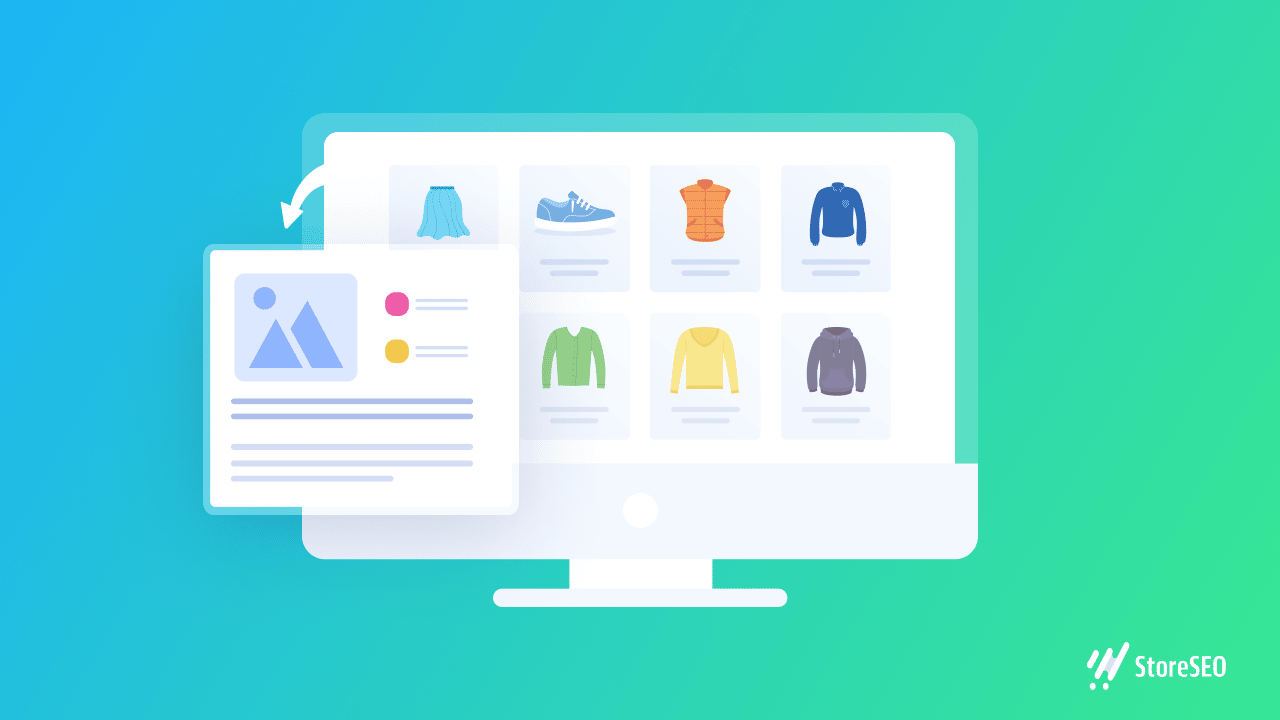
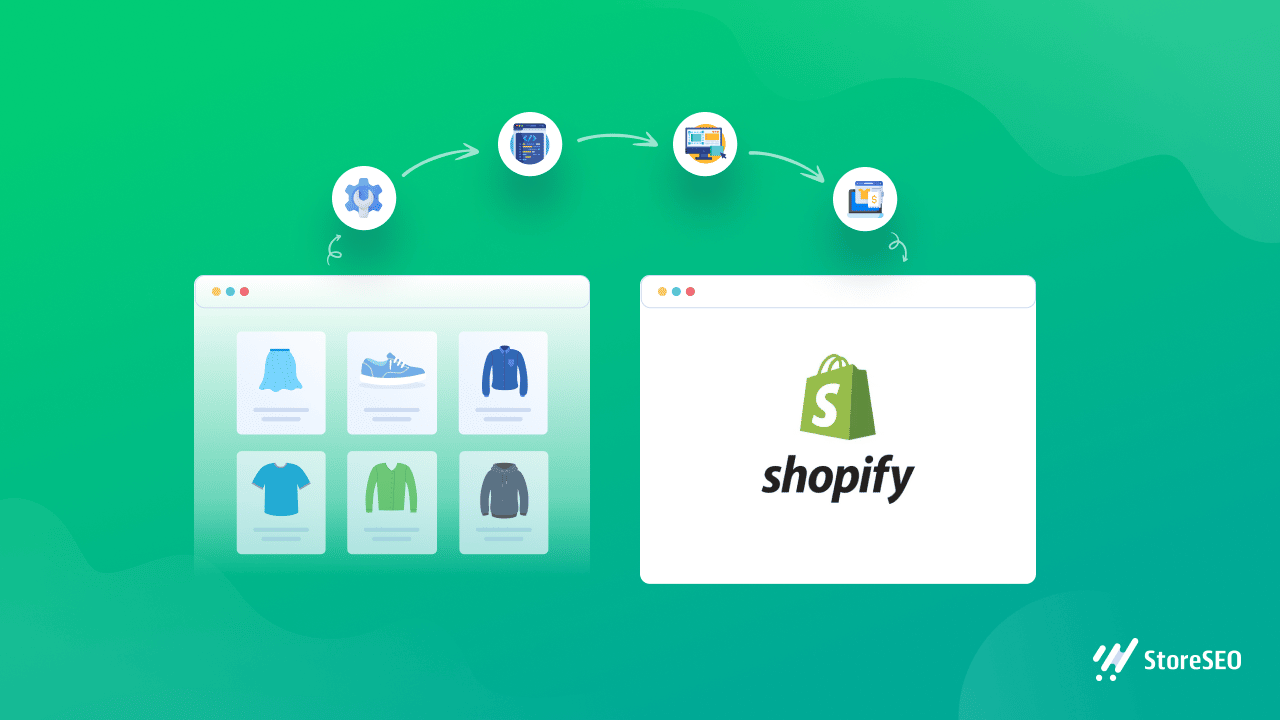
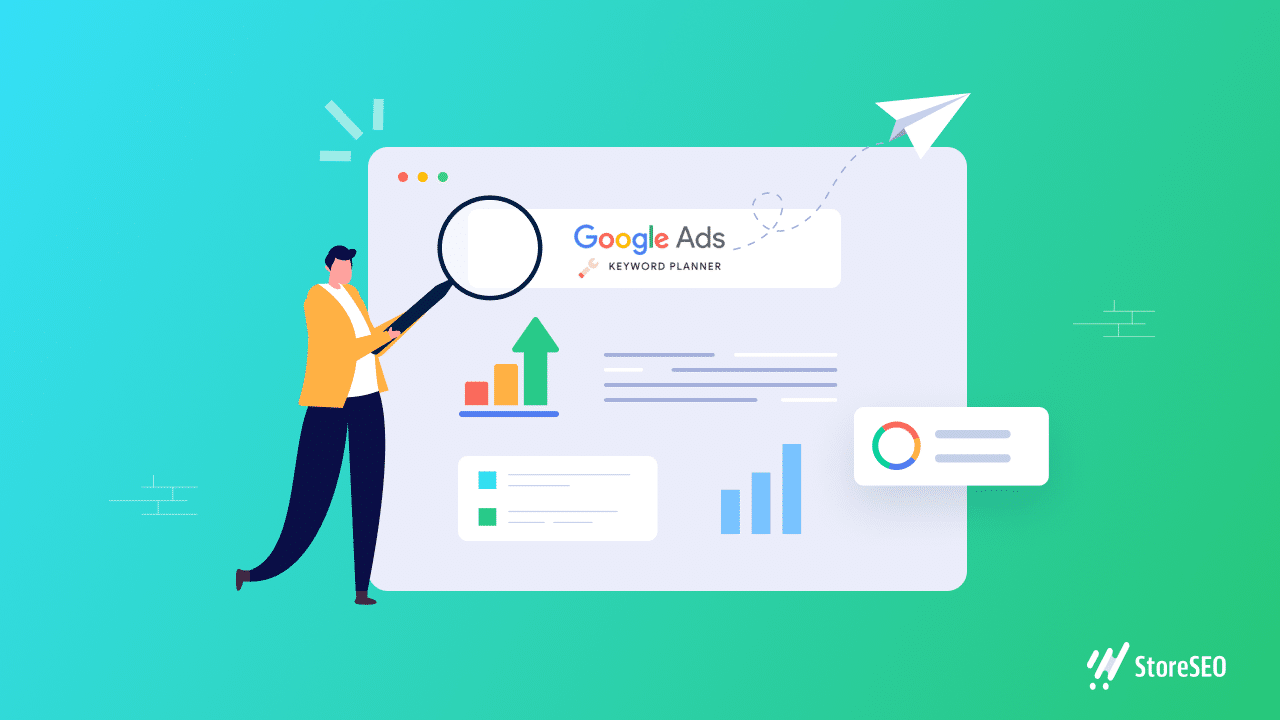
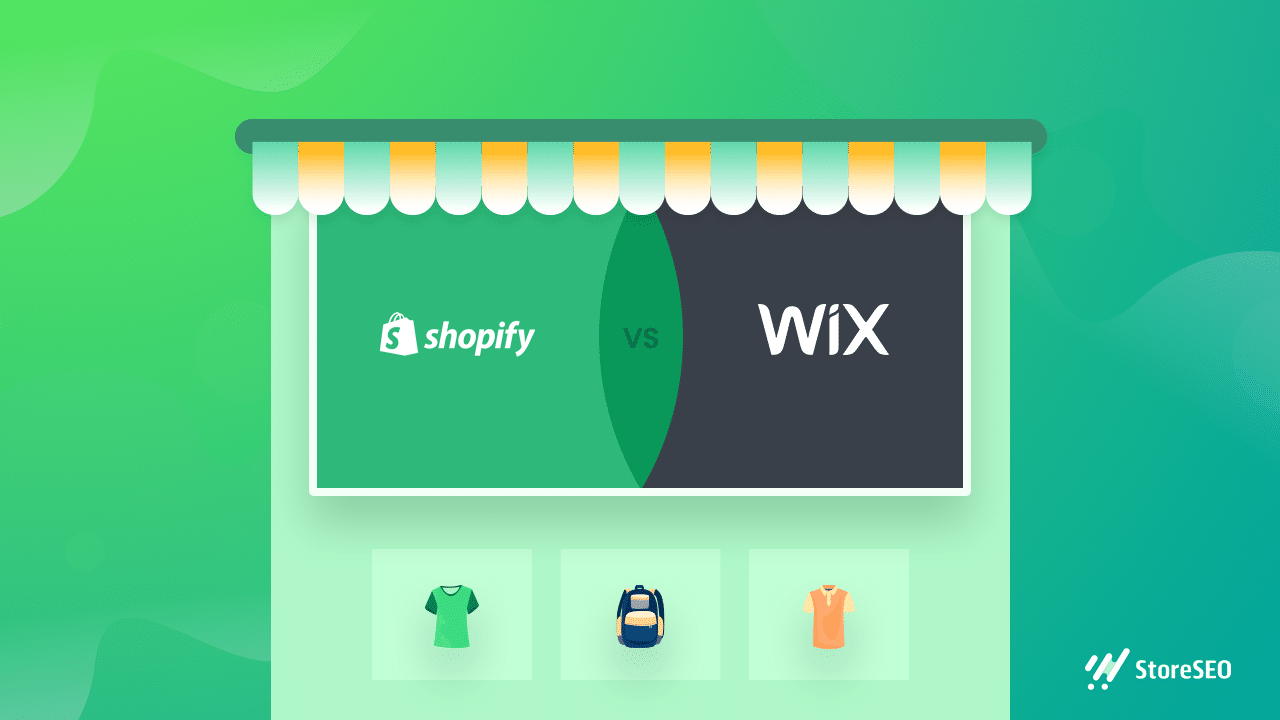
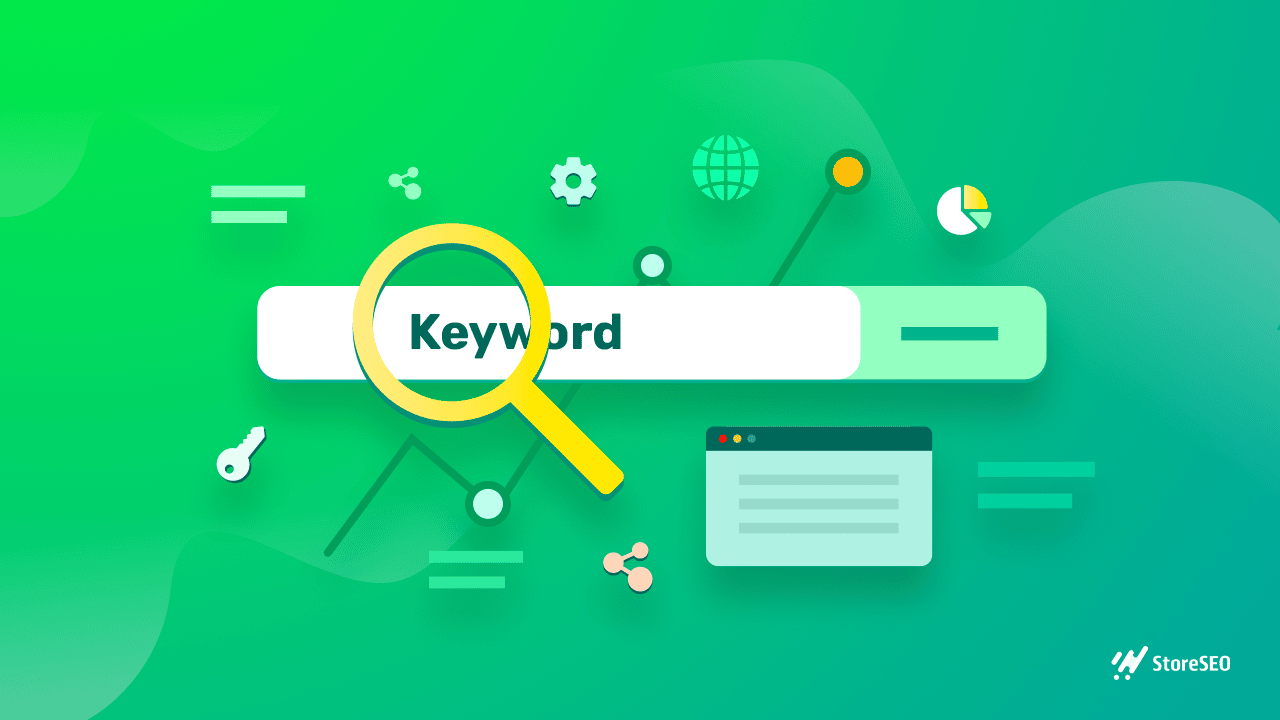
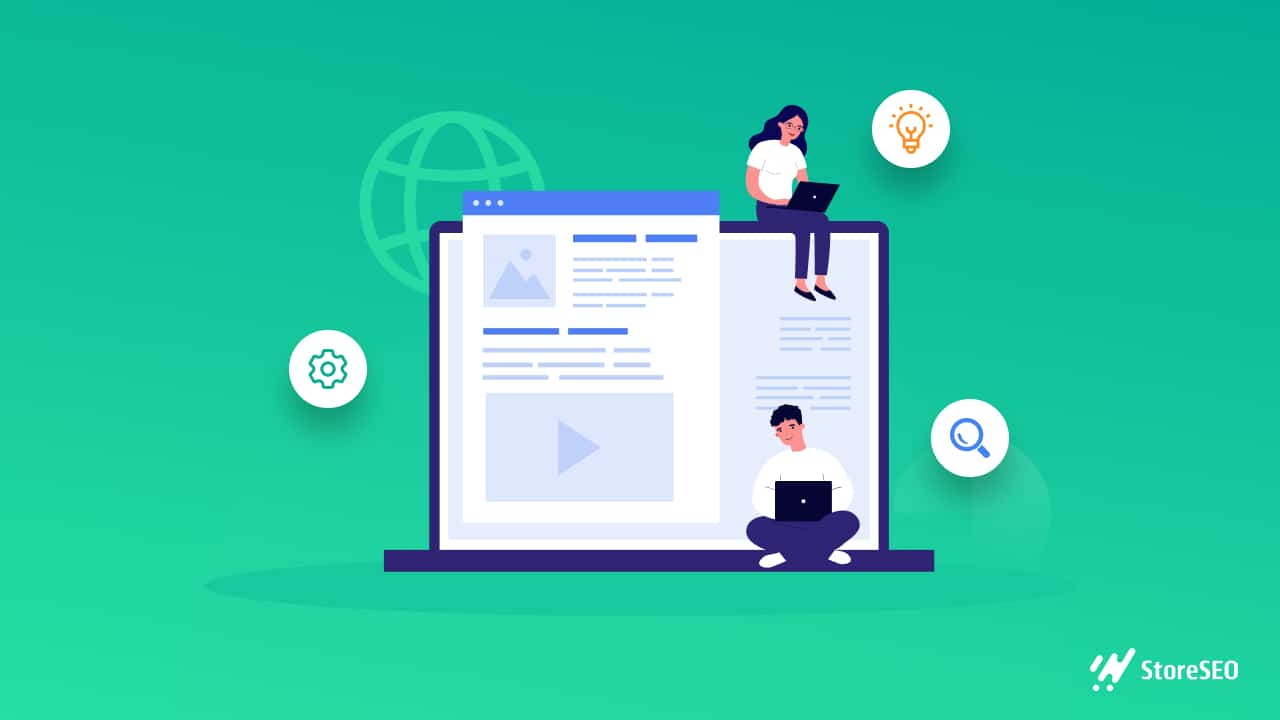
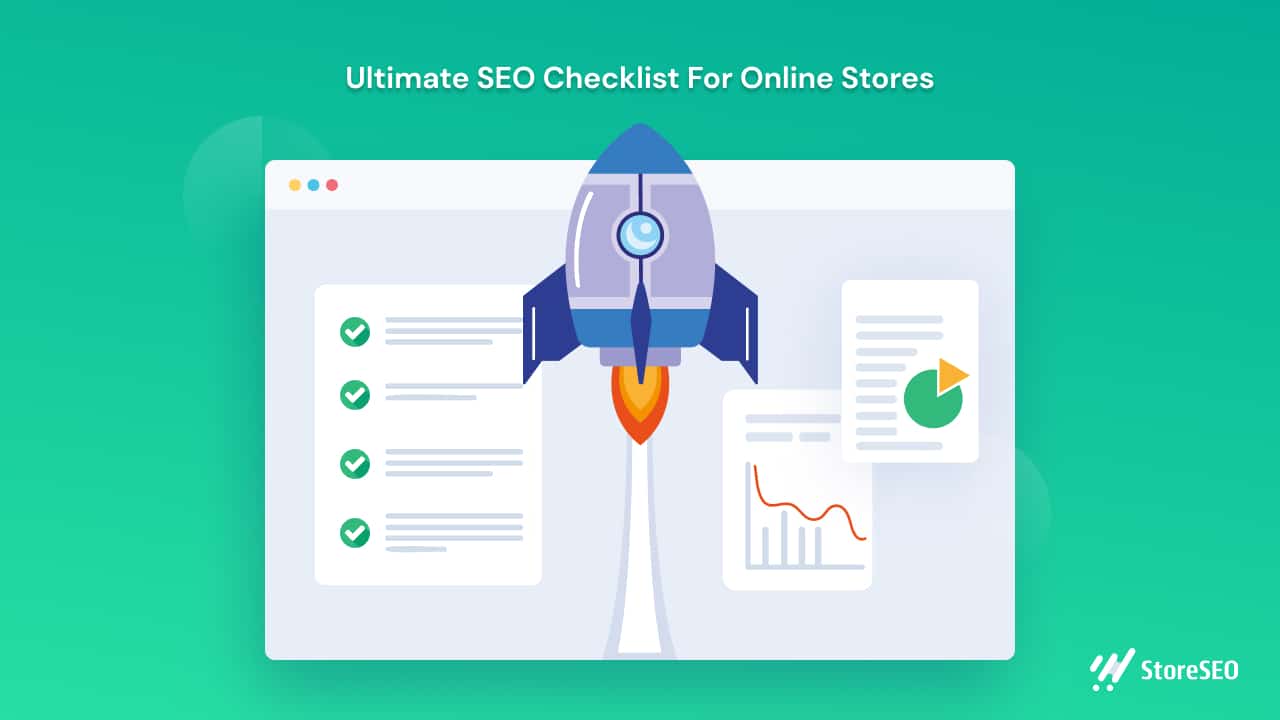
![How To Build A Shopify Store From Scratch [In 30 Minutes]](https://storeseo.com/wp-content/uploads/2022/02/How-to-build-a-Shopify-Store-From-Scratch-In-30-Minutes-1.png)
